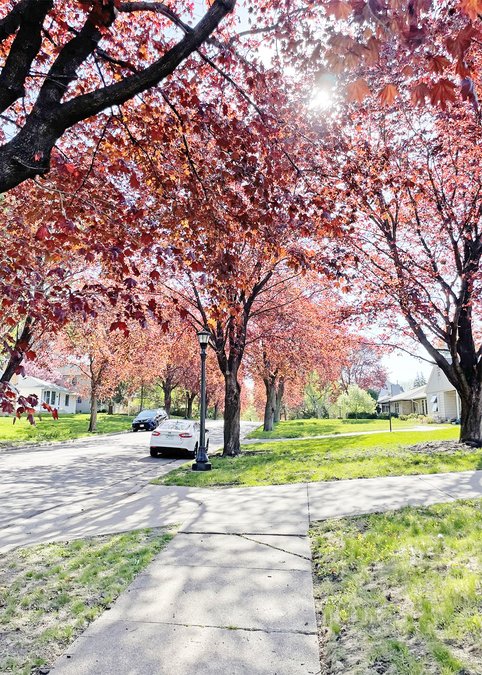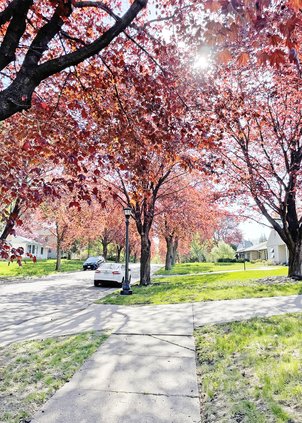Summer heat may have you seeking comfort from a nearby shade tree. You immediately experience as much as a 15 to 20 degree drop in temperature and enjoy the relief it provides.
Bring this shady relief home by looking for ways to include trees in your landscape. First, monitor patterns of sun and shade on and around your home throughout the day and throughout the year as the angle and position of the sun changes. Observe the impact your home, neighboring homes, sheds and existing plantings have on the sunlight reaching your landscape.
Consider providing welcome shade where needed during the hottest hours of the day and weeks of the year. Look for opportunities to plant trees where you can make a difference in your comfort and money spent cooling your home.
Plant trees, if space allows, near those areas where you spend time outdoors. Shading patios and decks makes them more inviting on a hot summer day. Deciduous trees that drop their leaves in winter allow you to soak up some welcome sunshine during the cooler months of the year.
Maximize the cooling benefits to your home by planting trees on the east and west side of your house. Shading the roof, walls and windows greatly reduces heat gain and energy needed to cool your home. Since about 75 percent of the heat gain in a building comes through the windows, shading them can greatly increase your comfort and reduce money spent cooling your home. Once again, deciduous trees provide needed shade in summer and allow warming sunlight into homes during the cooler months.
Don’t overlook paved areas near your home that greatly impact the air temperature. Shading paved drives and walks reduces heat absorbed that is released back into the surrounding air. Lowering the temperature of the space around your home helps lower the indoor temperature.
Shading an air conditioner can increase its efficiency by as much as ten percent, reducing energy use and saving you money. If space is limited, consider planting a shade-producing shrub or vine trained on a trellis. Be sure to provide space around the unit for needed airflow.
Avoid underground and overhead utilities when planting trees. Tall trees that eventually grow into the wires or structures may interfere with utilities and power transmission, creating a real hazard. Improper placement results in pruning that ruins their beauty or requires removal, eliminating any benefit they provided. Always call 811 as you plan new plantings and at least three business days before placing the first shovel in the ground. It can help reduce the risk of injury and avoid the inconvenience that can happen when you damage an underground utility.
Consult your local university extension service and energy company for plant selection and placement recommendations for your area. Those living in wildfire prone areas need to also consider fire-safe landscaping practices.
No room to plant trees on your property? Consider joining the local tree board or other tree planting group. Adding trees to your community can help you and your neighbors create a healthier, cooler environment that everyone can enjoy.
Melinda Myers is the author of numerous books, including Small Space Gardening. Myers web site is www.MelindaMyers.com.





